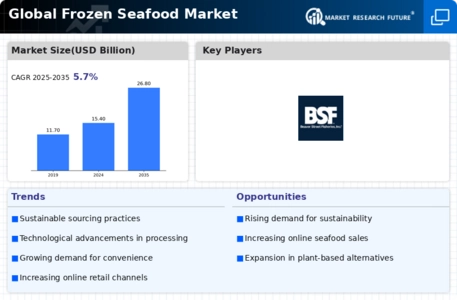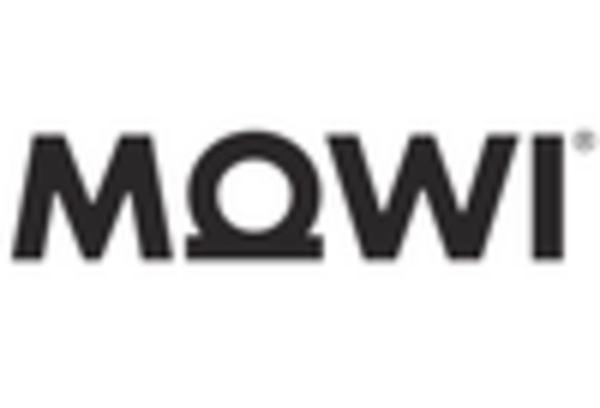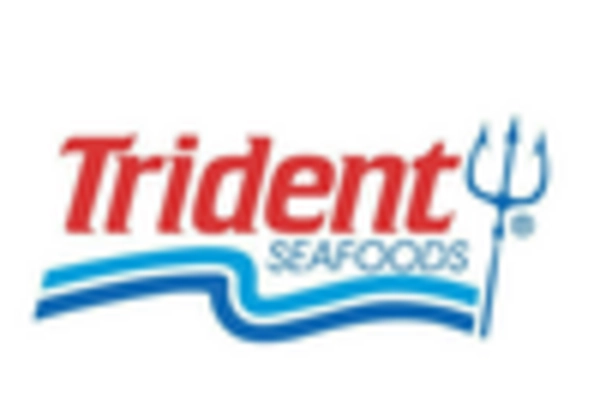Frozen Sea Food Market Summary
As per MRFR analysis, The Global Frozen Seafood Size was estimated at 15.41 USD Billion in 2024. The frozen seafood industry is projected to grow from 16.29 USD Billion in 2025 to 28.36 USD Billion by 2035, exhibiting a compound annual growth rate (CAGR) of 5.7 during the forecast period 2025 - 2035.
Key Market Trends & Highlights
The Global Frozen Seafood is experiencing robust growth driven by health trends and technological advancements.
- Health consciousness among consumers is propelling the demand for frozen seafood products, particularly fish.
- Sustainability initiatives are increasingly influencing purchasing decisions in North America, the largest market for frozen seafood.
- Technological advancements in freezing methods are enhancing product quality and shelf life, benefiting the crustaceans segment, which is the fastest-growing.
- Rising demand for convenience foods and the expansion of e-commerce platforms are key drivers fueling market growth.
Market Size & Forecast
| 2024 Market Size | 15.41 (USD Billion) |
| 2035 Market Size | 28.36 (USD Billion) |
| CAGR (2025 - 2035) | 5.7% |
Major Players
Marine Harvest (NO), Thai Union Group (TH), Nippon Suisan Kaisha (JP), Mowi ASA (NO), Dongwon Industries (KR), Trident Seafoods Corporation (US), High Liner Foods (CA), Bumble Bee Foods (US), Seafood Export Association (IN)



 Source: Secondary Research, Primary Research, Market Research Future Database and Analyst Review
Source: Secondary Research, Primary Research, Market Research Future Database and Analyst Review













Leave a Comment